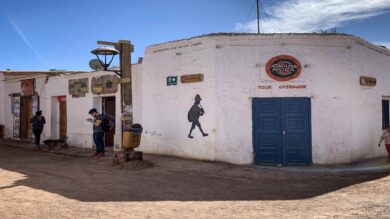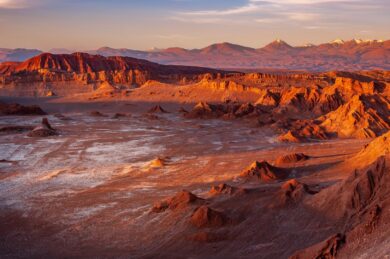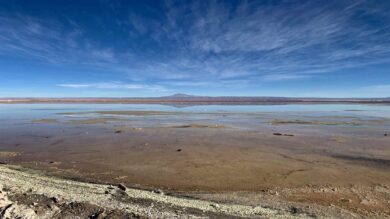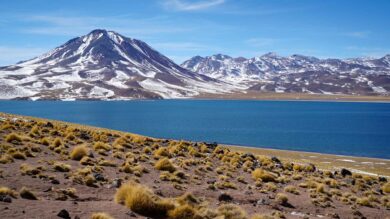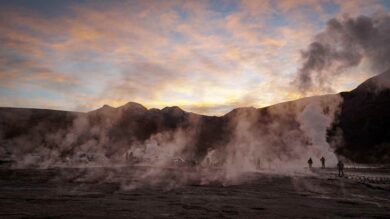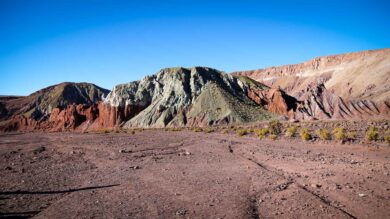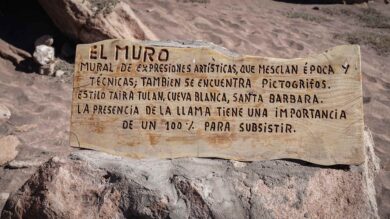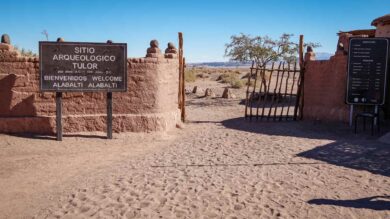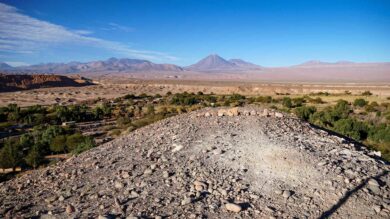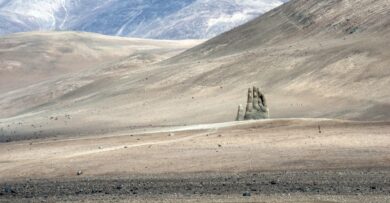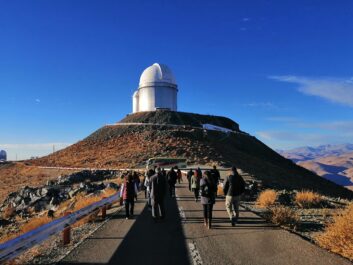Northern Chile & The Atacama Desert
Northern Chile is characterized by its arid desert landscapes, ancient archaeological sites, including prehistoric geoglyphs and the world’s oldest known mummies, and the mining of copper, lithium, and other minerals. The most famous sight in the region is the Atacama Desert, one of the largest and driest deserts on Earth, where some areas receive less than 0.04 inches (1 millimeter) of rainfall per year. The Atacama is known for some of the most unique landscapes on Earth including the Valle de La Luna (Valley of the Moon), with its lunar like craters and sand dunes, the Salar de Atacama salt flats, the breathtaking Chaxa, Miscanti and Miniques lagoons, which are surrounded by snow capped volcanoes, and the El Tatio geysers. There are also ancient archaeological sites in the desert like the Yerbas Buenas Petrogylphs, the ancient village of Aldea de Tulor, and the Pukara de Quitor fort.
Another famous sight in the region is the Hand of the Desert (“La Mano del Desierto”), which is literally a sculpture of a giant hand (nearly 36 feet high) emerging from the desert sands, near the town of Antofagasta. It is a surreal and thought-provoking work of art that was created by Chilean sculptor Mario Irarrázabal in 1992. The sculpture has been interpreted in various ways by viewers and art enthusiasts. Some see it as a representation of the human struggle against the forces of nature, while others view it as a symbol of solitude and contemplation in the vast desert landscape. Its meaning is open to individual interpretation.
Some of the other sights in Northern Chile include Arica, and the Paranal, ALMA and Mamalluca observatories. Arica has a rich rich historical heritage. It was originally inhabited by indigenous people, including the Chinchorro culture, one of the world’s oldest mummification cultures. In the 16th century, the Spanish established a presence in the region, and Arica became an important port for trade between South America and Spain. The city played a role in the War of the Pacific (1879-1884), during which it changed hands between Chile and Peru multiple times. The clear and dry skies of the Atacama Desert make it an ideal location for astronomical observation. Therefore, several world-class observatories, such as the Paranal Observatory, the ALMA (Atacama Large Millimeter/submillimeter Array) and the Mamalluca observatory, are situated in the desert. These observatories contribute significantly to our understanding of the universe.
Destinations
Key sights to see
Map
Add to current board
- My Board
- Ali Thursday Test
- Our 2nd Board Test
- third board
- Africa
- My Board
- Paris
- My Board
- My Board
- My Board
- My Board
- My Board
- My Board
- fhjm
- gfdg
- Europe
- Atacama
- London
- Cape Town
- Europe Trip
- Chile Trip
- Easter Island
- Zimbabwe
- My Trip
- Ghana
- My Board
- Test
- Test test1
- Argentina
- Ecuador and the Galapagos
- Italy
- My Board
- my trip
- My Board
- My Board
- My Board
- My Board
- My Board
- My Board
- Botswana
- My Board
- Beaches
- My Board
- Patagonia
- My Board
- My first board
- My Board
- My Board
- Greece
- My Board
- My Board
- Iberian Peninsula
- My Board
- Athens
- My Board
- My Board
- My Board
- My Board
- Ecuador
- My Board
- Argentina
- Argentina Dec21
- Argentina Dec21
- My Board
- My Board
- Turkey
- My Board
- Greece
- My Board
- My Board
- My Board
- Dominican Republic
- My Board
- Patagonia – 2023
- My Board
- My Board
- My Board
- My Board
- My Board
- My Board
- My Board
- My Board
- My Board
- My Board
- My Board
- My Board
- My Board
- My Board
- My Board
- My Board
- My Board
- My Board
- My Board
- My Board
- My Board
- My Board
- My Board
- My Board
- My Board
Add to favorite
Your new board is ready, add more of your favorite places, activities, countries and accommodations
